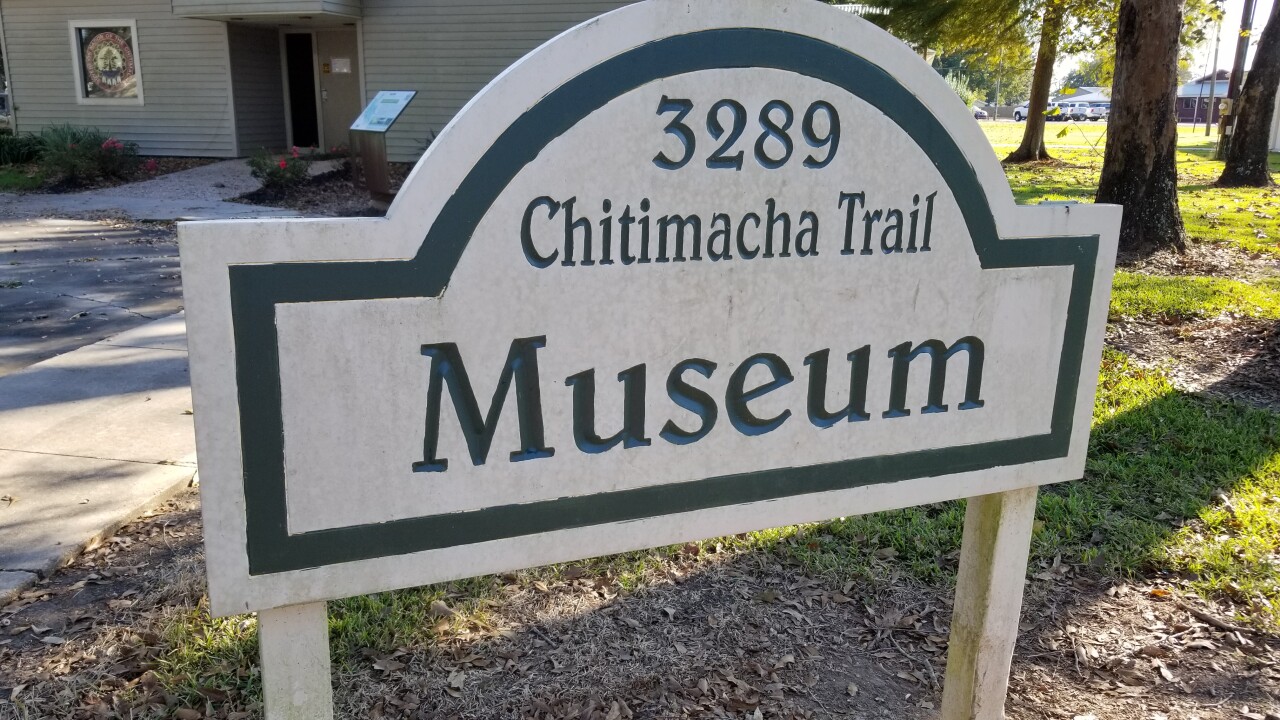On the banks of the Bayou Teche in St. Mary Parish is the Sovereign Nation of the Chitimacha. Humble beginnings, perseverance, and now prosperity.

According to legend, the Chitimacha are the original inhabitants of what we now know as South Louisiana. Lacey Fonseca, the Museum Interpreter says, "We were a peaceful tribe. We were fishermen, we lived off the waterways. It was peaceful village life and everything we needed was here."

Everything to make a good life off of the land. At the museum, there's definitive proof of their existence several centuries ago. Fonseca continues, "We have a chunky stone that dates back to the 1300s and we do have our traditional dugout, which we have mounted here that dates back to the 1600s."

One of Fonseca's favorite things about the museum are the school field trips. She says, "We're actually interacting and engaging them. I let them touch things, and teach them parts of our language. The cutest thing for me is when they leave and I have forty 4th graders going, "Nito! Nito!" Telling me, "bye". And that's the highlight of every tour."

At first, when Europeans settled, they lived side by side. Unfortunately those good times didn't last. "Slaving raids took place against the Chitimacha villages, so at one point in Louisiana history, the Chitimacha people were the most enslaved of any group." says Kimberly S. Walden, the Cultural Director and Tribal Historic Preservation Officer for the Chitimacha Tribe of Louisiana.

And the problems continued into the 20th century. Walden continues, "Locals wanted our land. Our people were poisoned. They were shot. There were many atrocities that happened in the early 1900s.

Children were sent to Carlisle Indian Industrial School in Carlisle, Pennsylvania. The mission of the Carlisle School was to basically strip the Indian out of the person and quote-unquote save the man. We acknowledge that part of our history but we don't let it hold us back. We know more today about our history than I think we ever did. And certainly the language being passed on to children that will carry us for generations."

And preserving the language is an understatement. Walden says, "It went from wax cylinder recordings, to cassette tape. All the written notes were digitized as well.""We've developed our language on Rosetta Stone software." That software is now available to all tribal members.

It's been taught at the Tribal School for over 20 years. Today they thrive with their own constitution, and tribal government. Fonseca says, "The tribe operates with a five man council which consists of a Chairman, Vice Chairman, Secretary/Treasurer, and two council members."

And another first according to Fonseca, "Our current Chairman is Ms. Melissa Darden, who is our first elected female chairman of the tribe." When you head to the museum, this the main learning point! Fonseca continues, "Humble beginnings and adversity are not reasons to just give up. Through commitment to self, and tribe, and perseverance makes us stronger. We're a small tribe, but we're still here, and we're thriving."
If you would like to visit the museum, they're open Monday through Thursday from 9-4:30 but closed from 12-1pm for lunch. On Friday, the museum is open from 9 to 11:30am. Saturday tours can be made by appointment. When you arrive call 337-923-4830, the number is on the front door. You can also visit the museum website for more information.


